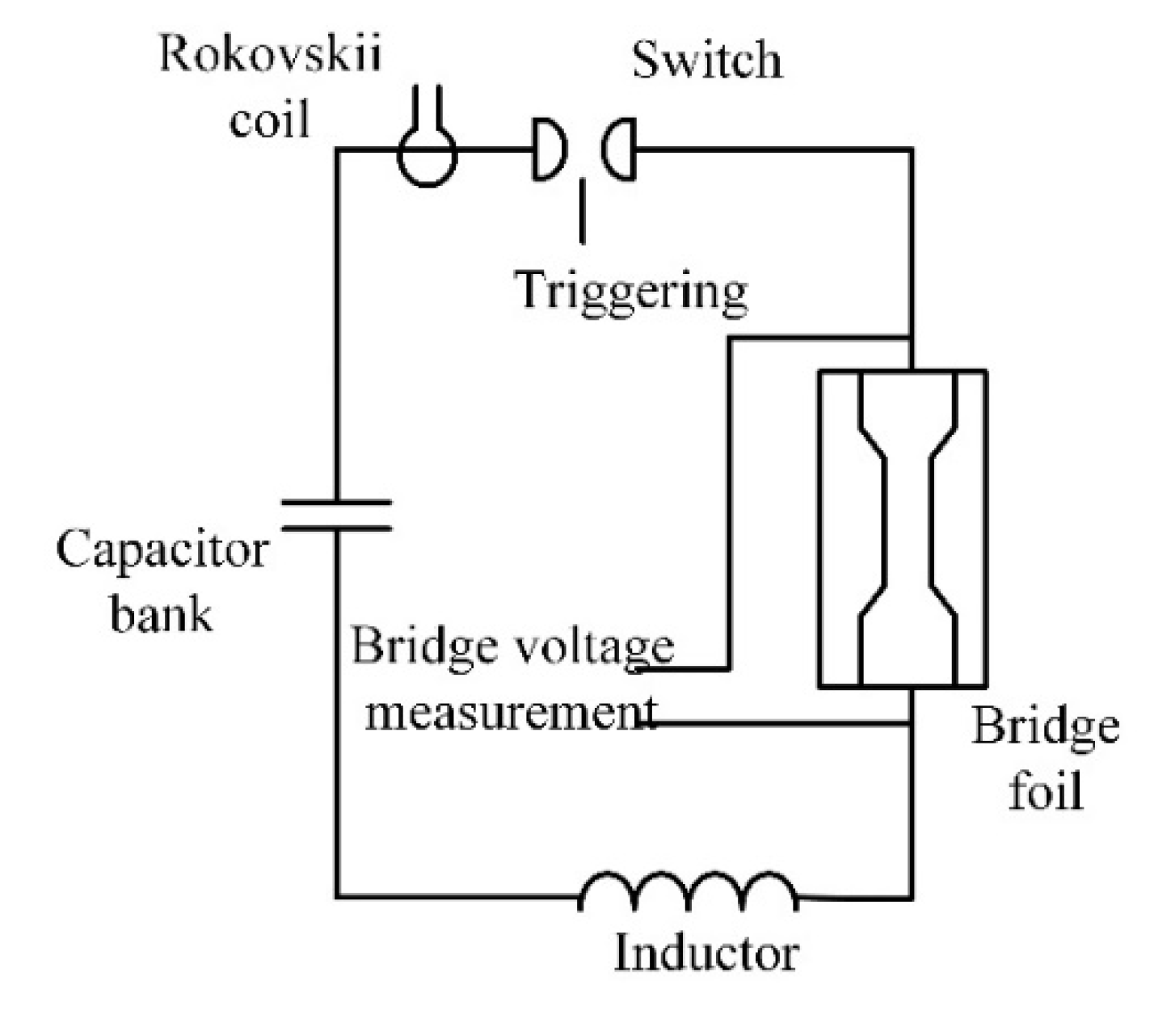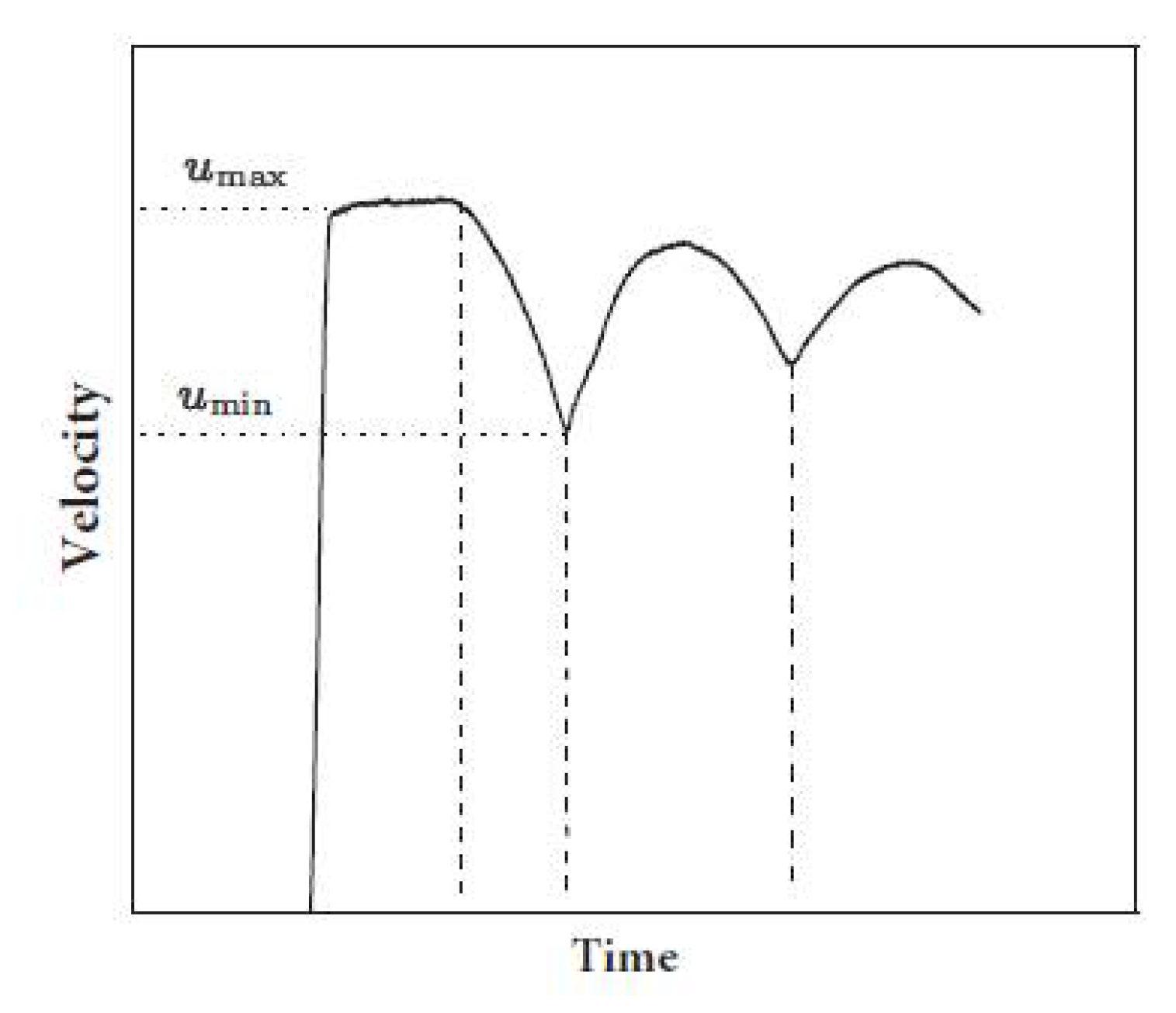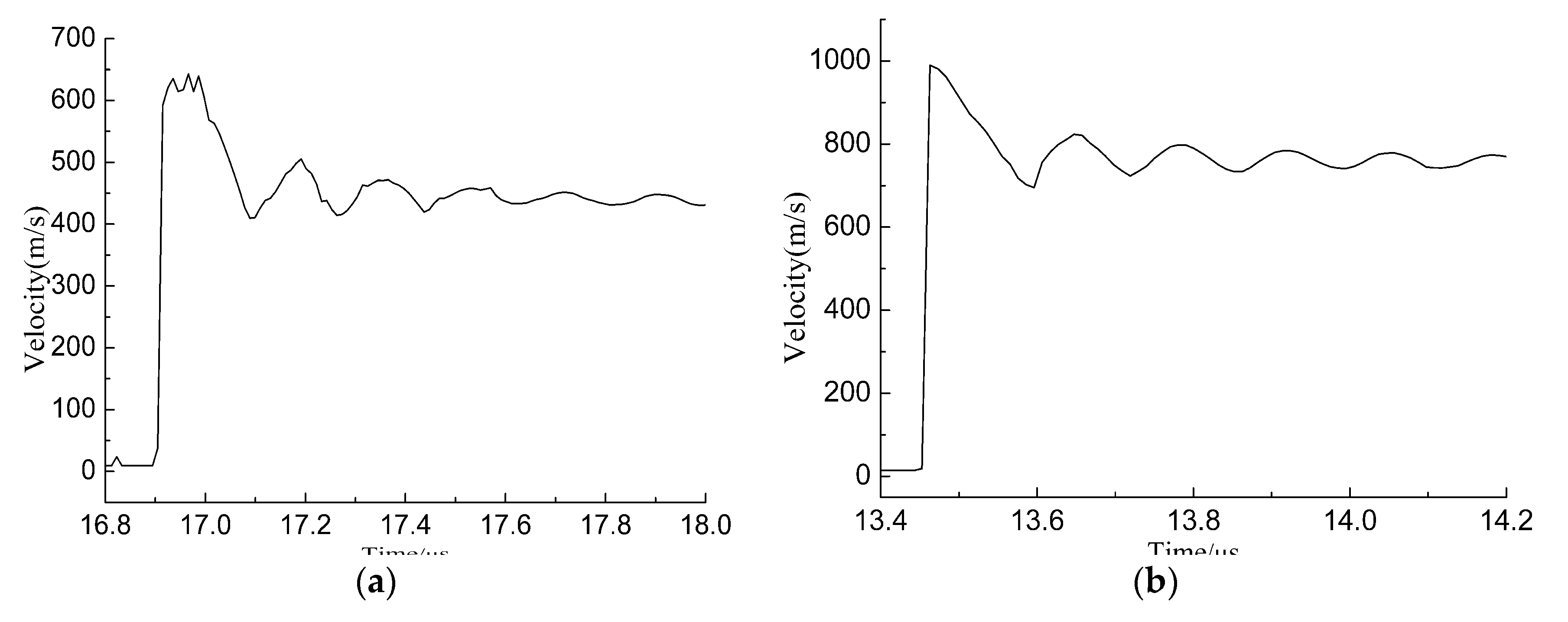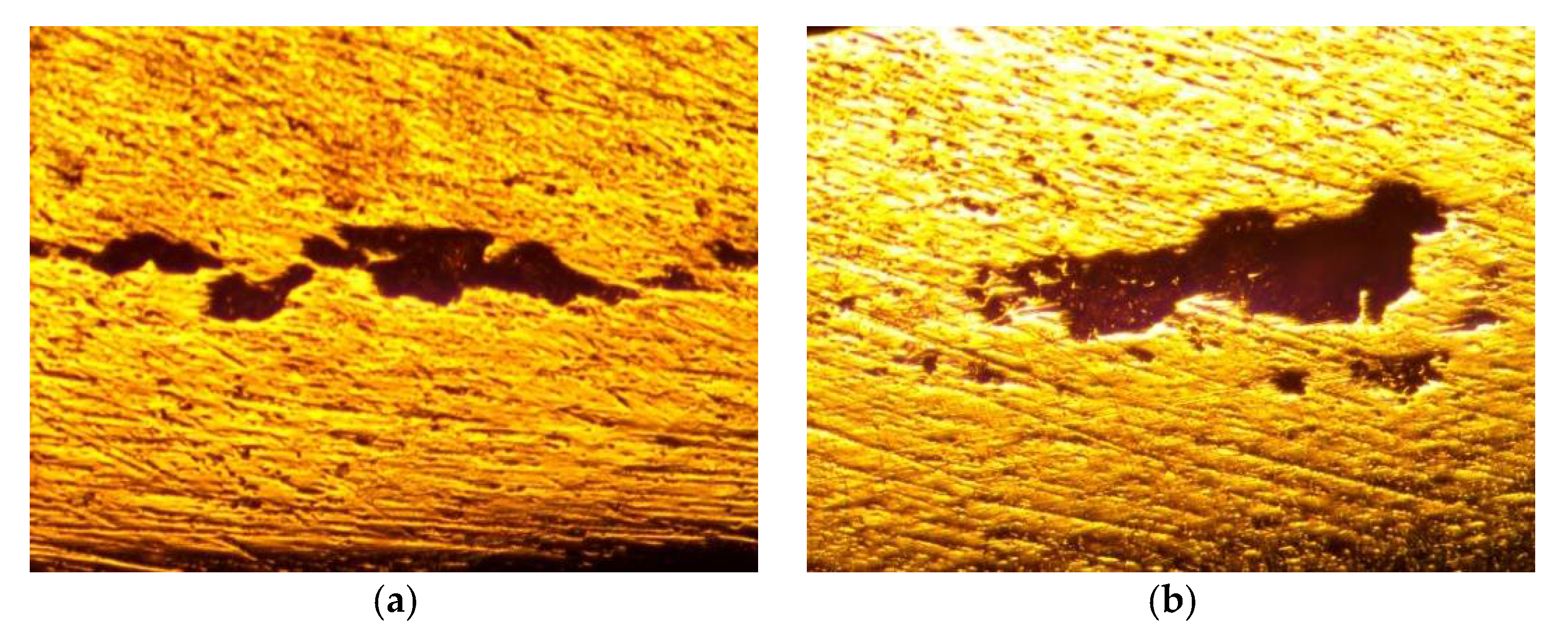Experimental Study on Spallation of Titanium Alloy Plates under Intense Impulse Loading †
Abstract
:1. Introduction
2. Experimental Method
2.1. Experimental Principle
2.2. Experimental Set-Up
3. Results and Discussions
3.1. Character of Free Surface Velocity
3.2. Experimental Results
3.3. Analysis and Discussion
4. Conclusions
Author Contributions
Acknowledgments
Conflicts of Interest
References
- Curran, D.R.; Seaman, L.; Shockey, D.A. Dynamic failure of solids. Phys. Rep. 1987, 147, 253–388. [Google Scholar] [CrossRef]
- Meyers, M.A.; Aimone, C.T. Dynamic fracture (spalling) of metals. Prog. Mater. Sci. 1983, 28, 1–96. [Google Scholar] [CrossRef]
- Antoun, T.; Curran, D.R.; Seaman, L.; Kanel, G.I.; Razorenov, S.V.; Utkin, A.V. Spall Fracture; Springer: New York, NY, USA, 2003. [Google Scholar]
- Rosenberg, Z.; Meybar, Y.; Yaziv, D. Measurement of the Hugoniot curve of Ti-6Al-4V with commercial manganin gauges. J. Phys. D Appl. Phys. 1981, 14, 261. [Google Scholar] [CrossRef]
- Millett, J.C.F.; Whiteman, G.; Bourne, N.K.; Gray, G.T., III. The role of anisotropy in the response of the titanium alloy Ti–6Al–4V to shock loading. J. Appl. Phys. 2008, 104, 073531. [Google Scholar] [CrossRef]
- Me-Bar, Y.; Boas, M.; Rosenberg, Z. Spall studies on Ti–6Al–4V. Mater. Sci. Eng. 1987, 85, 77–84. [Google Scholar] [CrossRef]
- Dandekar, D.P.; Spletzer, S.V. Shock response of Ti-6Al-4V. In AIP Conference Proceedings; AIP: Melville, NY, USA, 2000; Volume 505, pp. 427–430. [Google Scholar]
- Wielewski, E.; Appleby-Thomas, G.J.; Hazell, P.J.; Hameed, A. An experimental investigation into the micro-mechanics of spall initiation and propagation in Ti–6Al–4V during shock loading. Mater. Sci. Eng. A 2013, 578, 331–339. [Google Scholar] [CrossRef]
- Ren, Y.; Wang, F.; Tan, C.; Wang, S.; Yua, X.; Jiang, J.; Ma, H.; Cai, H. Shock-induced mechanical response and spall fracture behavior of an extra-low interstitial grade Ti–6Al–4V alloy. Mater. Sci. Eng. A 2013, 578, 247–255. [Google Scholar] [CrossRef]
- Zhao, J.H.; Sun, C.W.; Tang, X.S. Development of Electric Gun with High Performance. J. Exp. Mech. 2006, 21, 369–375. [Google Scholar] [CrossRef]





| Sample | Flyer Thickness | Impact Velocity | Impact Pressure | Spallation Strength | Spalling Position | Tensile Strain Rate /105 |
|---|---|---|---|---|---|---|
| 1 | 0.5 | 1.78 | 7.6 | 2.557 | 0.50 | 2.025 |
| 2 | 0.5 | 2.33 | 12.0 | 3.278 | 0.38 | 2.206 |
Publisher’s Note: MDPI stays neutral with regard to jurisdictional claims in published maps and institutional affiliations. |
© 2018 by the authors. Licensee MDPI, Basel, Switzerland. This article is an open access article distributed under the terms and conditions of the Creative Commons Attribution (CC BY) license (https://creativecommons.org/licenses/by/4.0/).
Share and Cite
Zhao, Y.; Li, R.; Mo, J.; Tan, F.; Sun, Y. Experimental Study on Spallation of Titanium Alloy Plates under Intense Impulse Loading. Proceedings 2018, 2, 403. https://doi.org/10.3390/ICEM18-05240
Zhao Y, Li R, Mo J, Tan F, Sun Y. Experimental Study on Spallation of Titanium Alloy Plates under Intense Impulse Loading. Proceedings. 2018; 2(8):403. https://doi.org/10.3390/ICEM18-05240
Chicago/Turabian StyleZhao, Yayun, Ruiyu Li, Jianjun Mo, Fuli Tan, and Yuxin Sun. 2018. "Experimental Study on Spallation of Titanium Alloy Plates under Intense Impulse Loading" Proceedings 2, no. 8: 403. https://doi.org/10.3390/ICEM18-05240




